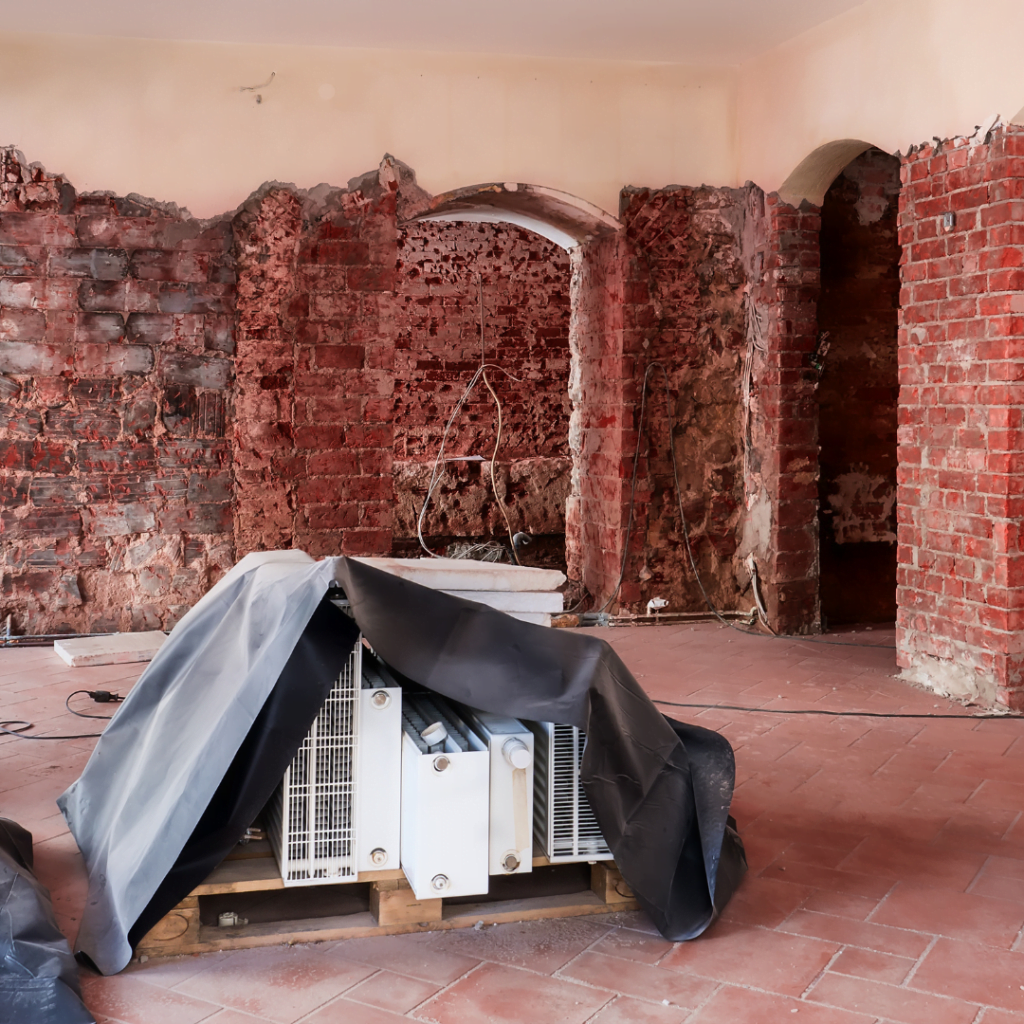Delving into History: Exploring Lone Star Restoration’s Exemplary Historic Renovations.
Preserving the past is an essential endeavor that allows us to honor the rich history and cultural heritage embedded within our architectural treasures. Lone Star Restoration stands as a distinguished expert in historic renovations, breathing new life into buildings that carry stories of bygone eras. With a profound understanding of the significance of historical preservation, Lone Star Restoration combines craftsmanship and expertise to revitalize structures while maintaining their authenticity.
Through a delicate balance of preservation and modernization, the company ensures that these architectural marvels continue to inspire and educate generations to come. Join us as we delve into the world of Lone Star Restoration’s historic renovations and uncover the captivating tales of their remarkable projects.
The Art of Historic Renovations:
Preserving the architectural integrity of historic buildings requires a delicate balance between honoring the past and adapting to the needs of the present. Lone Star Restoration’s expertise lies in the art of historic renovations, where they masterfully navigate the complexities of reviving structures while retaining their historical significance.
One of the key aspects of historic renovations is understanding the profound importance of these buildings. These structures often hold stories of significant events, cultural heritage, and architectural styles of a bygone era. Lone Star Restoration approaches each project with meticulous research and reverence for the historical context, ensuring that the renovations are in harmony with the original design intent.
To achieve successful historic renovations, Lone Star Restoration employs a multidisciplinary approach. A team of skilled craftsmen, architects, historians, and preservation experts collaborate closely to create a comprehensive plan that respects the building’s history while addressing the needs of the present.
The company’s commitment to authenticity is evident in every aspect of their work. From sourcing materials that match the original construction techniques to replicating intricate architectural details, Lone Star Restoration’s artisans strive for unparalleled precision and attention to detail. By utilizing traditional craftsmanship and techniques, they breathe new life into aging structures, allowing them to stand as testaments to the past.
Historic renovations also require a deep understanding of preservation guidelines and regulations. Lone Star Restoration works closely with preservation organizations and local authorities to ensure that the renovations adhere to the highest standards of historical accuracy and preservation ethics. Their expertise in navigating these guidelines allows for a seamless integration of modern amenities and technologies while preserving the building’s unique character.
Through their artistry, Lone Star Restoration transcends the boundaries of mere construction and evolves it into a form of storytelling. Each restored historic building becomes a living testament to the past, celebrating the architectural heritage and enriching the communities in which they stand.
Join us as we embark on a journey to explore Lone Star Restoration’s exceptional historic renovations, where the art of preservation is skillfully blended with modern sensibilities, resulting in awe-inspiring transformations that honor the past while embracing the future.
Showcasing Remarkable Projects:
Lone Star Restoration has an impressive portfolio of historic renovation projects that showcase their expertise and passion for preserving architectural treasures. Each project undertaken by the company tells a unique story of revitalization, breathing new life into structures that have witnessed the passage of time. Let’s explore some of their remarkable projects:
1. The Grand Mill: This historic mill, once the heartbeat of a thriving industrial community, had fallen into disrepair. Lone Star Restoration meticulously restored the mill, preserving its original timber framing and iconic waterwheel while incorporating modern amenities. The revitalized space now serves as a cultural center, preserving the community’s history and providing a hub for events and gatherings.
2. The Heritage Mansion: This stately mansion, with its ornate Victorian architecture, was a symbol of elegance in its heyday. Lone Star Restoration took on the challenge of restoring the mansion to its former glory. Their skilled craftsmen meticulously repaired and replicated intricate woodwork, restored original stained glass windows, and revitalized the grand staircase. Today, the Heritage Mansion stands as a stunning example of period architecture, hosting private events and offering a glimpse into the past.
3. The Old City Hall: Lone Star Restoration played a pivotal role in the restoration of the iconic Old City Hall, a cherished landmark in the community. By carefully preserving and restoring the building’s original façade, clock tower, and decorative elements, they ensured that the historical significance of the structure remained intact. The renovated Old City Hall now serves as a cultural center, housing galleries, museums, and community spaces.
4. The Historic Theater: This dilapidated theater, once a center of entertainment and cultural significance, was in dire need of restoration. Lone Star Restoration painstakingly restored the theater’s ornate plasterwork, repaired the stage and seating, and installed state-of-the-art sound and lighting systems. The revitalized theater now hosts live performances, screenings, and community events, preserving the community’s artistic heritage.
These examples demonstrate Lone Star Restoration’s commitment to preserving the essence of historic buildings while adapting them to contemporary needs. Through their expertise, attention to detail, and reverence for history, Lone Star Restoration has breathed new life into these architectural gems, ensuring that their legacy continues to inspire and captivate generations to come.
Meticulous Research and Planning:
Behind every successful historic renovation project lies extensive research and meticulous planning. Lone Star Restoration understands the importance of delving into the history of each building, unraveling its unique story, and conducting thorough documentation.
Before embarking on a restoration project, Lone Star Restoration’s team of experts engages in comprehensive research. They study historical records, architectural drawings, and photographs to gain a deep understanding of the building’s original design, materials used, and historical significance. This research forms the foundation for their restoration efforts, ensuring that every decision made aligns with the building’s authentic character.
Moreover, in collaboration with historians and preservation specialists, Lone Star Restoration conducts on-site investigations to uncover hidden architectural elements, identify structural issues, and assess the building’s overall condition. This detailed analysis helps them develop a comprehensive restoration plan that addresses both aesthetic and structural concerns.
Throughout the research and planning phase, Lone Star Restoration also considers the needs of the present. They consult with clients to understand their vision for the space and identify any functional upgrades required while ensuring these modifications are sympathetic to the building’s historical context.
Expert Craftsmanship and Attention to Detail:
Lone Star Restoration’s team of skilled craftsmen brings unmatched expertise to every historic renovation project. With years of experience and a deep appreciation for traditional craftsmanship, they execute each restoration with meticulous attention to detail.
Restoring historic buildings often involves intricate woodworking, plasterwork, masonry, and metalwork. Lone Star Restoration’s craftsmen possess the specialized skills required to repair or replicate these elements. From hand-carving intricate wood moldings to meticulously matching paint colors and textures, their dedication to craftsmanship ensures the preservation of the building’s original aesthetic.
Their expertise extends to architectural features such as windows, doors, and decorative elements. Whether it involves restoring ornate stained glass, repairing delicate plaster motifs, or recreating missing ironwork, Lone Star Restoration’s artisans skillfully revive these elements, restoring them to their former splendor.
Collaboration with Preservation Organizations:
Lone Star Restoration recognizes the importance of collaboration with preservation organizations to ensure the highest standards of historical accuracy and adherence to preservation guidelines. They work closely with these organizations to gain insights, share knowledge, and seek guidance throughout the restoration process.
By collaborating with preservation organizations, Lone Star Restoration accesses a wealth of expertise in historical preservation and conservation. This collaboration helps them navigate complex regulatory requirements, ensuring that the restoration project meets all necessary standards and guidelines.
Additionally, working alongside preservation organizations allows Lone Star Restoration to contribute to the larger preservation community. They actively participate in preservation conferences, seminars, and workshops, sharing their experiences and insights while learning from other preservation experts. This collaborative approach strengthens their commitment to the preservation of our architectural heritage.
Challenges and Solutions:
Historic renovation projects often present unique challenges. Lone Star Restoration embraces these challenges as opportunities for innovation and problem-solving. Their experienced team approaches each obstacle with creativity and expertise, finding solutions that preserve the historical integrity of the building.
Common challenges in historic renovations include structural deficiencies, outdated systems, and the need to integrate modern amenities while respecting the building’s character. Lone Star Restoration employs structural engineers and conservation specialists who collaborate to develop strategies that address these challenges without compromising the building’s historical value.
For example, when faced with deteriorating foundations, they employ advanced underpinning techniques to stabilize the structure while preserving the original architectural elements. When integrating modern systems such as HVAC or electrical wiring, they conceal them within the building’s existing features, ensuring a seamless blend of old and new.
By leveraging their experience and innovative problem-solving, Lone Star Restoration overcomes these challenges while maintaining the authenticity and historical significance of the buildings they restore.
The Impact of Historic Renovations:
Historic renovations have a significant impact on communities and cultural heritage. Lone Star Restoration understands the broader implications of their work and recognizes that restored buildings contribute to the revitalization of communities and the preservation of cultural heritage.
Restored historic buildings become focal points within communities, attracting visitors, promoting tourism, and stimulating economic growth. They serve as reminders of a community’s history, fostering a sense of pride and identity among residents. Additionally, these renovated spaces often become venues for cultural events, educational programs, and community gatherings, further enhancing the social fabric of the community.
Beyond the immediate community impact, historic renovations contribute to the preservation of our cultural heritage. Each restored building serves as a tangible link to the past, allowing future generations to appreciate and learn from the architectural styles, craftsmanship, and historical context. By preserving these buildings, Lone Star Restoration ensures that our shared heritage is not lost to time but is passed down as a legacy to future generations.
Furthermore, historic renovations promote sustainable development. By repurposing existing structures rather than demolishing and constructing anew, valuable resources are conserved, reducing waste and environmental impact. Lone Star Restoration’s commitment to eco-friendly practices, such as using reclaimed materials and implementing energy-efficient solutions, further supports sustainable development goals.
In conclusion, Lone Star Restoration’s historic renovations go beyond the physical restoration of buildings. They have a profound impact on communities, cultural heritage, and sustainability. Through their meticulous research, expert craftsmanship, and collaboration with preservation organizations, Lone Star Restoration continues to breathe new life into historic structures, ensuring that our architectural treasures are preserved and celebrated for generations to come.





